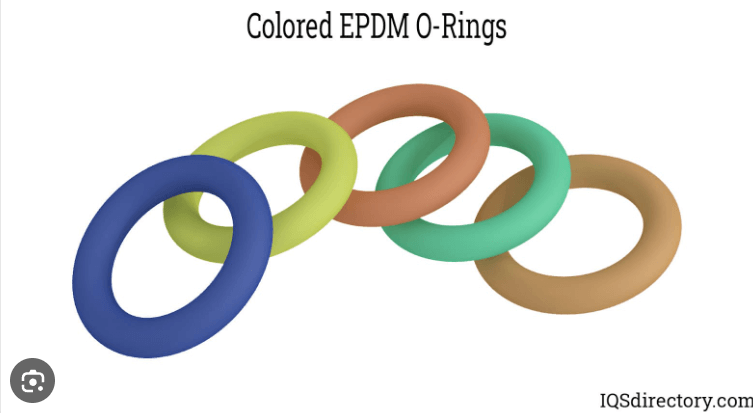
In the intricate landscape of engineering, the true heroes are often the smallest components. O-rings, seemingly insignificant in size, are actually fundamental in ensuring the seamless operation of countless engineering systems. These tiny seals are crucial in maintaining the efficiency and integrity of complex machinery, demonstrating that size isn’t always indicative of importance.
The benefits of using an O-ring are undeniable. These small, yet powerful components offer unparalleled leak prevention, a critical factor in the longevity and reliability of engineering systems. Their versatility and effectiveness make them a must-have in any engineer’s toolkit, proving that great things indeed come in small packages.
Understanding O-Rings
O-rings are looped sealing devices, typically made from elastomeric materials, known for their circular cross-section. Designed to be seated in a groove and compressed during assembly, they form a seal at the interface. The simplicity of their design belies their importance in engineering, where precision and reliability are non-negotiable.
The Role of O-Rings in Engineering
O-rings, though small in size, play a crucial role in the realm of engineering. Their primary function is to seal interfaces in machinery, preventing the escape of fluids and gases, which is essential for maintaining system efficiency and preventing breakdowns. The indispensable role of O-rings in engineering is highlighted through their diverse applications:
- Sealing Fluid Systems
They are integral in fluid systems for sealing joints and connections. They prevent the leakage of liquids in hydraulic and pneumatic systems, which is vital for the smooth operation of machinery.
- Gas Containment
In gas systems, O-rings ensure the containment of gases, preventing leaks that could lead to inefficiency or hazardous situations. They are used in various applications, from HVAC systems to gas handling equipment in industrial settings.
- High-Pressure Environments
These are designed to withstand high-pressure conditions, making them suitable for use in high-pressure valves and fittings. Their ability to maintain a seal under pressure is critical in preventing equipment failure and ensuring safety.
- Temperature Resistance
These seals are capable of operating in a range of temperatures, from extreme cold to high heat. The choice of material for the O-ring dictates its temperature tolerance, thus impacting its application in temperature-sensitive environments.
- Chemical Compatibility
O-rings must resist the chemicals they come in contact with to prevent degradation. This is particularly important in chemical processing industries and applications involving corrosive substances.
- Dynamic and Static Applications
They function effectively in both dynamic (moving parts) and static (stationary parts) applications. This versatility allows their use in a wide range of machinery, from engines to pumps and valves.
- Vibration Damping
O-rings help in damping vibrations within machinery, contributing to smoother operation and longer equipment life. This is essential in machinery where vibration can cause wear and tear or operational issues.
- Customization for Specific Needs
O-rings come in various sizes and specifications, allowing customization for specific engineering needs. This adaptability ensures that they can provide effective sealing solutions across a broad spectrum of applications.
These simple pieces are more than just simple components; they are vital for the safe and efficient operation of countless mechanical systems. Their role in sealing, whether in fluid systems, gas containment, or high-pressure environments, underscores the importance of O-rings in engineering.
Materials Used in O-Ring Production
O-ring materials vary widely to suit different environmental and operational demands. Common materials include nitrile rubber, known for its resistance to oils and fuels; silicone, valued for its thermal stability; and fluoropolymers like Viton®, which are suitable for high-temperature applications. The choice of O-ring materials significantly influences their performance and suitability for specific O-ring applications.
Applications of O-Rings in Different Industries
O-rings find applications across a multitude of industries. In the automotive sector, they are essential in fuel and brake systems. The aerospace industry relies on them for hydraulic systems. Their industrial uses extend to fluid systems in manufacturing equipment, where they ensure leak-free operations.
Considerations for Optimal O-Ring Performance
Several factors must be considered to ensure optimal performance of O-rings:
- O-ring Sizes and Specifications
Selecting the correct size and shape is critical for forming an effective seal.
- Environmental Factors
Temperature, pressure, and chemical exposure significantly impact O-ring performance.
- Material Compatibility
The O-ring material must be compatible with the system’s fluids and gases.
Challenges and Solutions in O-Ring Design and Use
Ensuring the reliability and longevity of O-rings in engineering applications involves understanding and addressing various challenges. By focusing on O-ring design considerations and proper maintenance, these challenges can be effectively mitigated.
-
- Wear and Tear:
- Cause: Continuous use leads to physical degradation, affecting the seal’s integrity.
- Solution: Regularly inspect and replace O-rings to prevent failure. Choosing materials with higher wear resistance for applications involving high friction can extend the lifespan of O-rings.
- Wear and Tear:
- Chemical Degradation:
-
-
- Cause: Exposure to harsh chemicals can deteriorate O-ring materials, causing them to lose elasticity and sealing ability.
- Solution: Select O-ring materials specifically designed for chemical resistance, such as fluorocarbon or perfluoroelastomers, depending on the chemicals they will be exposed to.
-
- Improper Installation:
-
-
- Cause: Incorrect installation can lead to immediate or eventual failure of the O-ring.
- Solution: Follow precise installation protocols, including proper lubrication and ensuring that O-ring sizes and specifications match the application requirements. Training personnel on correct installation techniques is also crucial.
-
- Temperature Fluctuations:
-
-
- Cause: Extreme temperatures can cause O-rings to harden and crack or become too soft and lose their sealing properties.
- Solution: Use O-rings made from materials suitable for the operating temperature range, such as silicone for high-temperature applications or nitrile for lower temperatures.
-
- Pressure Changes:
-
- Cause: Fluctuations in pressure can lead to extrusion and nibbling of the O-ring.
- Solution: Design O-ring grooves to accommodate pressure changes and choose materials with the right hardness to withstand the pressures of specific applications.
By carefully addressing these challenges, the effectiveness and longevity of O-rings in sealing solutions for engineering can be significantly enhanced, ensuring the smooth operation of various industrial and mechanical systems.
Conclusion
They may be small, but their impact on engineering and industrial applications is monumental. From choosing the right O-ring for specific applications to ensuring proper O-ring maintenance and longevity, these seals are fundamental in the operation of countless systems. In the world of fluid systems and beyond, O-rings remain a cornerstone of sealing technology in engineering.
Dive into the world of O-rings and discover their immense impact on engineering. Explore our guide to choosing, using, and maintaining O-rings for optimal performance in various applications. Enhance your engineering systems with O-ring essentials!








